Leaderboard
Popular Content
Showing content with the highest reputation on 08/28/2020 in Posts
-
Hi! I just want to hear the player base's opinions on adding obligatory medical fees to healthcare. I saw some people mention the topic in other threads, but I've yet to find a recent one with a focus on medical fees specifically. It's not a suggestion yet since I've yet to hear sides to it I probably haven't thought of. (There's also some brainstorming about it already, I hear, but I received no response to my inquiries and still wanna' see what's up!) I feel like it would encourage being more careful of one's health, stimulate roleplay, make people's financial statuses more realistic, and in general, bring immersion. At the moment, healthcare is free unless a player roleplays having them and doing /charity to self-inflict a financial hit. This sometimes results in the person suing another for the fees, but that would border in powergaming since the player is the one coming up with the costs. Obviously, since Los Santos is based in the United States, this isn't exactly realistic. Imagine what an utopia it would be if professional healthcare was free and accessible! This is what I have had in mind: Fees for ambulances and medical care: > The ambulance could have a base cost* somewhere between $500 - $3,000. This would encourage those roleplaying poor to rely on other options to get the care they need, such as calling a cab or having a friend drive you instead. This actually happens IRL! // *EDIT: I realize the FD is in need of roleplay. The fee could either be low or 0 - I don't personally mind, as long as some other fee system regarding healthcare is implemented. I thought this would be fun and immersion-bringing, but may have less amicable OOC consequences. > The bills for healthcare would depend on what injuries are upon the character, roleplay- or scriptwise. This would require an on-duty FD, medic or other hospital staff member to assess it (according to a set procedure) in order for the cost to be realistic and non-PG, but a script 'base' price could be implemented for cases of emergency where this isn't possible. The passive roleplay would stay the same, but actually having money come in through the hospitals could invite people to roleplay staff. Someone detached from the situation counting the fees makes suing others for the costs more fair. > Private healthcare providers are given more range in the way they handle payments. Because non-roleplay hospitals are free and there are no 'waiting lines' or difference in quality of care, it doesn't make sense for roleplay-run healthcare providers to charge actual rates for their service. > Bills would have a time frame which they would have to be paid in, like citations. Insurance: > The fact that money actually has to go towards their well being would invite people to invest in health insurance. Wealthy or just comfortable characters could easily afford a monthly payment and dodge the worst of medical fees when it comes to it. The most basic form of health insurance could be a script implementation like car insurance, but because it's not obligatory, it could also encourage people to set up insurance companies with better benefits. Exceptions: > PKs; because a PK is always disorienting to go through and a character obviously cannot remember what led to them ending up at the hospital, they could not seek reimbursement for any medical fees. Still, some service fees could be applied so the point of looking after one's health is not completely lost, these still being lower than the 'base' fee for an injury one would survive. > 'Passive' healthcare like cancer treatments and other non-emergency, ongoing care taken to non-roleplay hospitals could also have set fees that one pays as they go, or could simply be roleplayed as this is a choice made by the player and not something that occurred through interactions with others. I'm not sure how this would apply into the system, if at all. I usually play somewhat poor characters as the struggle for money gives me incentive to act even in times where I don't feel particularly creative, and seeing money be so available and scarcely lost on things that would really damage your economic situation IRL is immersion-breaking, personally. I have no issue with people who roleplay being rich, but getting above the middle-class line is much, much more difficult than GTAW would make you believe, and I think some sort of medical bills system would bring at least some reality into the mix. Even the tips that show when loading up GTA tell you that having a dangerous lifestyle can get expensive because of the cost of healthcare... I want to hear suggestions, ideas and criticism from the other sides of the server, please! This is all based on my views of the situation.8 points
-
7 points
-
6 points
-
Hello. I got bored and wanted to play with hesco blocks. So... I did. This is the result, feel free to use it for your Menyoo stuff/stolen valor/operations/whatever. I figured I'd share since even though it's not the best, it's definitely better than nothing, I guess! The download is under the images. Install path: D:\Steam\steamapps\common\Grand Theft Auto V\menyooStuff\Spooner Simply make a new .xml file and paste this inside. Pastebin Link Or download the file, attached to the thread! Access: Open Menyoo (F8 by default), Object Spooner, Manage Save Files, FOB. Have fun! FOB.xml5 points
-
5 points
-
5 points
-
Illegal faction management has a zero tolerance policy for rule violations by faction leadership and has closed this faction due to the persistence of faction leadership in violating rules. Therefore, in addition to this faction closure, the faction leadership shall be prohibited from creating any new factions. In addition, faction leadership was responsible for the facilitation of metagamed weapon transfers between a player's characters, directly breaking the following rule:4 points
-
Been a pleasure to be a part of this. @Naitor @arkan @metwad congratulations boys.4 points
-
4 points
-
3 points
-
Regard your soldiers as your children, and they will follow you into the deepest valleys; look on them as your own beloved sons, and they will stand by you even unto death. - Sun Tzu3 points
-
3 points
-
3 points
-
3 points
-
3 points
-
3 points
-
3 points
-
3 points
-
3 points
-
Introduction: Alvaro Santana born on 8/12/2002 in the City of Medellín, Colombia. He was born to his parents Julio and Dyanis Santana. He is the Nephew of Savario Santana and Leticia Ramos who are the brother and sister to his father Julio. Alvaro lived a happy life as a kid growing up on the streets of Medellin. He had friends and he had his family as well. When Alvaro was fourteen, he met a kid name Jorge who was active in a local street gang in his city. Alvaro and Jorge became really close, they would do almost everything together on the streets, from stealing car radios and selling drugs. Alvaro’s family didn’t approve of this as his family had ties to the active narco groups and political figures throughout Colombia, they have an image to maintain and Alvaro is damaging that image on the streets. One day, Julio and Dyanis decide that they are going to move out of the city in to the surrounding suburbs of Medellin to keep Alvaro out of trouble. Alvaro loved his family but he also loved to make money as well with his friend Jorge. When Alvaro turned sixteen his mother and father had a business meeting to attend to, so he gave them a kiss goodbye and they said that they will see him later. Around 10AM, Alvaro gets a call from his Aunt Leti, she tells him that his parents have died in a car accident. Alvaro is hurt by this news, a few days later they host a funeral and mourn over the loss of Julio and Dyanis Santana. Before they passed, Leti and Savi made a promise to their brother Julio that if anything was to happen to them that they will look after Alvaro, giving him the best that they could. From sixteen to eighteen, Alvaro has been living in Colombia causing mayhem throughout the City of Medellin. His Aunt Leti moved to Los Santos with her husband Alejandro after Alvaro’s parents died. Savi was busy running his drug operation throughout Colombia, so nobody was watching over Alvaro. One day Leti gets a call from a police officer back in Medellin, the officer tells Leti what’s been going on around the city with Alvaro. So, Leti decides that she is going to get Alvaro a passport and a work visa through her holding company to bring him to Los Santos and hopefully keep him out of trouble....2 points
-
Introduction: She's goth on the outside, weeb on the inside, and clumsier then a cat on cat nip, but Comet McFey always means well! When she's not got her head in video games, or distracted by anime, she's is the life of the party! She loves going out when she builds up the spoons for it, and is that kind soul who will do the simplest things like holding a door for someone to make their day a little easier. Helping others, making friends, and exploring the world to find who she is the never ending adventure for Comet. Sure she has social anxiety, and suffers from major paranoia, but thats normal in this day and age.... right? From her weeby antics, to her horrible puns and humor, Comet's that friend who's got your back if you got hers. Her past has been nothing but a wild rollcoaster, A LOT of crazy, and things that never made sense, but in the end, isnt life always a little bazaar?2 points
-
COPYRIGHT @ LOSSANTOSMOBS.COM 2021 Middle Eastern Organized Crime Groups Middle Eastern OC Groups came to fruition in the United States during the 1980s. The country’s hubs for such groups were established in Detroit, MI and New York City. Middle Eastern OC has since expanded across the entire American Northeast, and to Florida and San Andreas. There are an estimated 15 crime families, or clans, operating around the United States. They are comprised of numerous nationalities and ethnic groups, to include Egyptians, Iraqis and Israelis. While originally involved with “traditional” crimes, these groups were especially scrutinized after the September 11, 2001 attacks. Since then, numerous organizations around the country have been identified as aiding and assisting overseas terrorist groups. Shell companies will be formed within urban enclaves, ostensibly to provide religious support and other community services. However, this is a cover for funneling financial and logistical support to terrorist groups abroad. Middle Eastern OC groups typically engage in gun running, narcotics distribution, cigarette smuggling, interstate trafficking of stolen goods, fraud and money laundering. These enterprises rely on extensive networks of international criminal associates and can be highly sophisticated in their criminal operations. Middle Eastern criminal organizations often engage in joint criminal ventures with one another and across ethnic lines when there is potential profit.“ Source: FBI. The History of Israeli Organized Crime in Los Santos A new player in the mix. Who is he? Is he running the show? 01-02-2021 Born to two Jewish parents of Moroccan and French descent, David Mizrahi spent most of his childhood back and forth between Israel and the United States of America. His parents split up, and his mother decided to go live back in Israel, whereas his father was a US resident, and spent most of his life in the US. It is believed that David Mizrahi’s father was connected to the mob, but there’s no real evidence behind that claim. He’s been seen around mob circles, and has parlayed with very important known Israeli mob figures. It is believed that David Mizrahi’s been introduced to crime at the age of 16, and has spent his whole life reaping the rewards from a criminal lifestyle. David Mizrahi isn’t your average rogue Israeli criminal because of the connections he’s made through his mentor, Itay Waknine. It is believed that David Mizrahi’s reign is respected by two very big Eurasian criminals - one of them being the crowned Vasken Gezalian, and that even Benjamin Waknine himself has signed off on allowing David to operate for himself. It is believed that Itay Waknine directly pays tribute to two criminals, whereas David is operating alone, but he reaps all the rewards because of Itay Waknine’s connections, and his pull in Los Santos. David’s crew is believed to operate out of Rockford Hills, and this move was signed off by none other than Benjamin himself, and the very same criminals who vassalized Itay Waknine. Unlike his Israeli counterparts, David doesn’t have as many ties to Israel, and it is believed that he is operating on his own. He doesn’t have anybody to answer to. David Mizrahi lives a life of luxury, and when he isn’t earning income through illicit means, he can be spotted in several different nightclubs in Los Santos. It is believed that David is a loud, flashy but calculated enforcer. The Reign of Michael Lev 07-05-2015 Michael Lev, Joseph Waknine and Benjamin Waknine are seen by most as The Israeli Godfathers in Los Santos. For it was them who first prompted the move from Israel, and got the backing of The Jerusalem Circle to operate out in Los Santos. The Jerusalem Circle being a “Commission” of crime families in Israel. Joseph Waknine was first introduced to the Israeli underworld in Netanya, Israel during the 1990s by a notable crime family. Waknine operated as a runner under "Abraham Hazan" - a drug lord and close associate who is among the primary influences of Waknine's current repute. Joseph progressively clambered up the echelons through outstanding performances and sharp operation executions. He was merely a disposable man in his initial years but gradually proved otherwise. Throughout several years, it was suggested that Joseph should expand his operations in suitable areas deemed profitable, such as the United States. The proposition was approved; Waknine proceeded to scale his dope game to Los Santos by the late 2000s. He quickly struck prosperity through illicit activities. Waknine's money and hustle is primarily based on the production of ecstasy and outsourcing them to notable criminal figures, where they are then distributed to the streets / nightclubs for use. His right hand, Benjamin Waknine identified as his son, immigrated to Los Santos in 2013 for further expansion and distribution throughout the network. Waknine is noted as the main point of contact for distribution, as well as fee and debt collection on the behalf of Joseph. The Father Son Duo 03-24-2017 Benjamin Waknine rose to fame in Los Santos in a rather quick fashion. Known for his confrontational mentality, and lavish spending, it didn’t take too long before the federal authorities picked up wind. They eventually started building a RICO case on B. Waknine, starting in 2009. In 2012, B. Waknine was picked up on a RICO indictment but later he managed to beat the criminal case. With the lack of evidence presented by the FBI, he was released, and all indictments against him were dropped come 2014. After Michael Lev's 2016 arrest and incarceration, the father and son duo officially took over Lev's spot to rule the city of Fallen Angels. Benjamin was the muscle behind the operation, and his father was the brains behind it. Benjamin’s reign was smooth, and he had an extensive network built out of Rockford Hills. Some can even say that he had a God complex and that he wouldn’t bow down to any authority. This attribute spilled onto his members, who were publicly defiant against the Los Santos police and municipal government officials. The Israeli golden age was fruitful, but it didn’t last very long. After Benjamin’s father fell sick, Benjamin was called back to Israel, and he had to bring his Los Santos operation to a quick halt. The Israeli golden age comes crashing down 9-13-2019 After Benjamin Waknine’s absence, everything was left behind with another member of his family, I. Waknine. Itay was soft compared to his cousin, and he was pushed into a corner by his cousin’s old enforcers. Itay Waknine ended up branding away from The Waknine Organization by selling his soul to Vasken Gezalian, and one unknown other crowned vor. He had the protection, and the backing, to roam around as a free agent in the underworld. He was untouched, until a violent dispute took place between Waknine remnants, and the group that Itay pays tribute to. Numerous remnants from The Waknine Organization remain dead while Itay Waknine and a few others are still alive. Several surviving criminals are suspected to have fled back to Europe and Israel. Missing person’s reports have been issued for three alleged gangsters; they’re all classified as Endangered Missing. The current situation of the Israeli underworld in Los Santos is unclear. It all came crumbling down after Benjamin Waknine’s absence. Benjamin was a very brash person, and he instilled that in most of his associates. After he was called back to Israel, the leftover associates from his organization didn’t have the swagger to pull it off. The Demise of The Mizrahi Regime 30.06.2021 In late June a shootout left 11 people dead, and a few of them were believed to be reputed Israeli crime figures. David Mizrahi was among one of the people who unfortunately died in a shootout in Pacific Bluffs. The ambitious Itay Waknine made a move that cost him his small time offshoot crew. Authorities don’t know who kick-started the conflict but the very same people who were shooting at The Israeli figures were long time friends of Itay Waknine, and it is believed that he was in business with the notorious Ralph Sciandra. It is believed that Ralph Sciandra who was also spotted dead in the scene was racking in around a 300 thousand a month with Itay Waknine. Authorities don’t know what led to the sudden burst of violence that erupted between business partners - and the wave of violence that plagued Los Santos is still getting investigated by authorities. What now for The Israeli Cartel? 15.07.2021 The Waknines are known for their resilience. Benjamin Waknine himself beat a RICO case, and countless wars to subdue his criminal counterparts. His rise to fame in Los Santos was plagued by setbacks, but he still managed to come out on top after all of it too. His cousin and protégé is also believed to have been part of a civil war and multiple conflicts - and he’s always managed to stay alive during these altercations. The Pacific Bluffs shootout is a clear testament of that resilience. Itay Waknine’s business partners and earners all died, but he’s been spotted in Los Santos multiple times, and has taken multiple flights back and forth between Los Santos and Miami. Benjamin Waknine has been spotted in Los Santos multiple times with his right-hand man, Eyal Romano. Authorities believed that the brash young mob boss and his right hand man are still operating in their breeding ground of Los Santos. The Israeli Cartel still has a massive presence in Rockford, and they’re still seen mingling with figures of Rockford such as business owners and known small time criminals who all pay homage to Benjamin Waknine. OUT OF CHARACTER By joining this faction or posting a screenshot on our thread we hold the right to CK your character if leadership deems it right, considering the circumstances. You will have to gain screenshot permission first before posting a screenshot. If you've got questions or concerns about the faction, private message @kokaine ron.2 points
-
*all images are taken in GTAV - NOTHING IRL - ALL GAME. some pictures may take a few seconds to load, be patient. PHOTOSENSITIVE EPILEPSY WARNING2 points
-
James Granillo is a Los Santos based Captain or caporegime in the Conti crime family sometimes dubbed the Los Santos crime family. Granillo moved to LS at the young age of twenty to continue his personal success in the food and hospitality sector. Prior to his arrival, he worked in Newark for his uncle's delicatessen. This initial work provided Granillo prolonged exposure to the mafia who frequently visited to collect their weekly extortion fee from his uncle. Like every mob fairy tale, Granillo admired their valuable jewelry and flashy cars. He ultimately moved to LS with the money he had saved; his uncle's delicatessen had been running low on profits, and he was asked to leave, like many others before him, Granillo wanted to start a new life. Upon his arrival he became acquainted with mob associate Julius Leone who introduced him around the city. This friendship with Leone led to Granillo's introduction to mafia star Daniel Santoro, a soldier in the Conti crime family. Granillo impressed Santoro and was offered a job at the notorious Rothstein's Jewelry. David Pillini, one of Santoro's high profile associates was instrumental in structuring Granillo's descent into the criminal underworld. From being a mail-man for high-tier drug transactions to large firearms deals with one of his illicit associates. Pillini later took on Granillo as his personal driver, chauffeuring him around the city. Pillini further showed the ins and outs of mob life to Granillo, later assisting him under his wing until his disappearance a few months after. Santoro further exposed Granillo to innumerable underground dealings from drug trafficking to pimping. It is widely perceived that Granillo had taken over the notorious escort service once run by Nicholas Trisano - Vinewood Escorts. However, as the age old saying goes in that history repeats itself, Granillo had recently undertaken management of Al Dente's pizza parlor where he based a fraction of his operations. Granillo owned The Crooked Lounge, the building behind his underworld cognomen. East Vinewood, more specifically York Street was where Granillo spent most of his time, furthering his sphere of power under the late caporegime, Daniel Santoro. Al Dente's having left his grasp, he based the majority of his operations from the comfort of his bar. Granillo was instrumental in conducting considerable criminal tasks of his own, garnering the respect of his peers. With the return of Pillini, James' friend and mentor, the duo had come to be what they formerly were. On the night of August 27th, 2020, James Granillo and David Pillini, along with other associates, were inaugurated into the crime family as official members or soldiers. James served under caporegime, Daniel Santoro. On the day of January 23rd, 2021, James Granillo was made caporegime with David Pillini, Michael Farina and Peter Moro as his soldiers, or made-men. Later in the year, with the death of Peter Moro, came the induction of several new members, most notably Julian Mancini, Marco Mancini and Adam Costa all of whom joined the ranks of Granillo's crew. This thread follows James Granillo's story and end.2 points
-
'Popular posts' should either be ordered only by reactions or have the ability to switch between reactions and comments. Currently it is only ordered by comments. Would also be nice to choose a timescale e.g. all time, last week, last day, etc2 points
-
Playboy Sureños (PBS) Overview The Playboy Sureños (PBS), also known by the alternative name Rabbit (Conejo) Gang or simply Playboys is a long standing and viciously violent Mexican-American street gang that was founded in West Side Los Santos during the 1950's. The street gang established an early tradition of using the name “Conejos” or “Rabbits” to refer to their street gang, which referred to the PlayBoy Bunny logo adopted by the Playboys gang, this is despite the Playboys gang's name being much older than the Playboy Magazine. The oldies song 'Playboy' by The Marvelettes was also favored very early on in the Playboys gang's history and was often played and requested by members of the street gang while they were cruising around the streets looking for trouble. The Playboy Sureños, no matter where their street gangs and respective sets have a physical presence, always make use of the team apparel of the Pittsburgh Pirates, a National Football League franchise, to represent themselves. Other National Sports Leagues which the Playboys uses to identify themselves include but aren't limited to the Phillidelphia Phillies and the Los Santos Pounders. These mentioned teams are for the most part chosen by members of the playboys for the 'P' that appears on much of their merchandise. They are also noted for their tattoos which consist of the PlayBoy Bunny logo tattooed anywhere on their bodies. Other tattoos used by the Playboys include the addition of cracked devil horns to the forehead. In the street gang world, a tattoo depicting cracked devil horns on one's face always identifies the wearer as one who has committed a violent act towards a member of the Mara Salvatrucha (MS-13), a street gang which the Playboys 13 gang presently has a longstanding and bitter feud with, one that involves over ten years of bloodshed and countless dead or in vegetative statuses on either side. In fact, when the Mara Salvatrucha arrived to Los Santos in the 1980's, the Playboy Surenos were one of the first gangs to go up in arms to defend themselves and their community from what they viewed as an aberation, an enemy of the Chicano community and a threat to the culture itself. The Playboy Surenos gang became extremely militant throughout the 1990's as a result of street wars with the Mara Salvatrucha. The Playboys gang also make extensive use of the Playboy logo in their graffiti, where they tag Playboy bunnies with their individual street gangs and sets all within the Playboy bunny's body, but most notably around its ears. The official colors used by the Playboy Sureños gang and its respective cliques is blue, although certain offshoots of the Playboys gang are known to sport other colors in order to give their respective cliques under the PBS umbrella their own identity, even if it is minor. Alternative colors used by the Playboy Sureños include but aren't limited to black, red and in the cases of the various female cliques within the Playboys gang, the color pink is used. Presently the Playboy Sureños are known for their particularly bloody and brutal history which consists of multiple vicious gang wars stacked ontop of eachother. This, coupled the fact that they're considered rivals of just about every South LS Latino gang out there. The general thinking amongst members of the Playboys 13 is that all other gangs that aren't exactly the same as them are their sworn enemies. All those years of being on everybody's scope gave the Playboys gang a mentality that resulted in them having no trust for or from many of their fellow Sureño gangs. The Playboy Sureños, unlike some of their adversaries are known to carry with them a somewhat reasonable moral code when it comes to the way they operate in the streets. Rules within the street gang's ranks prohibit rape of any form. Additionally, members of the gang are prohibited from taking part in drive bys or in the murders of innocent women, civilians or children unless they cause some sort of trouble for the gang. Members of the Playboys who commit sex crimes, drive by's or crimes against innocent women/children are more often than not viciously stomped out by their gang brothers, before being either told to leave the neighborhood or even the city as a form of exile. In extreme cases, they're simply brutally murdered by their own street gang. The Playboys gang's culture, like the culture of most other Latin American street gangs is quite heavily rooted in territorial commitment, family ties and a sense of brotherhood and belonging. The Playboys gang carries a strong pride in fiercely defending its ethnic communities from perceived threats and also for the extreme sense of cultural identity that the gang's members are usually indoctrinated into from a young age. Despite their deep rooted pride in being a Chicano gang, they aren't like most other Sureno gangs. The Playboys for the most part consider themselves 'Renegade Sureños'. This is seen in how they avidly recruit from the African-American, Asian-American and White-American communities despite constant demands from the Mexican Mafia (La eMe) asking for such things to stop. The Playboy Sureños have expanded to all regions, counties and cities within San Andreas. They have expanded out of state to the rural and urban areas of Oregon, Washington, Idaho, Utah and Montana. The Playboy Sureños in San Andreas, Oregon, Washington and Utah are aligned with other Playboy Sureños street gang offshoots and their respective sets. In those three states and out of it, they are regularly at war with Sureños who are not a part of the Playboys. They are also regularly at war with the Norteños, the 18th Street gang and the Mara Salvatrucha street gang and transnational criminal organization. In Idaho and Montana, they are regularly in violent conflicts of varying degrees with indigenous Native American street gangs, outlaw biker gangs and criminal organizations of all ethnic groups and races. In San Andreas and in Los Santos the Playboys (PBS) gang has a very long list of rivals and very few true allies. Playboy Sureños (PBS); A History The Playboy Sureños 13 (PBS) street gang was founded in the Little Seoul neighborhood by Mexican Americans who identified with the Chicano subculture in 1955. Its founders were street gang members who moved to West Los Santos from the Cypress Flats in East Los Santos, close to the infamously street gang and organized crime infested neighborhood of El Burro Heights. The founding members moved to West Los Santos during the period of white flight from that district in the late 1940s to late 1950s. All the founding members of the street gang were Mexican Spanish speaking, multi-generational Mexican Americans. The original Playboys gang was originally a car club known as the Latin Playboys C.C. which was founded in 1956. The Latin Playboys C.C., however, was only a car club in terms of its name. In 1959, it had forty one members in the Little Seoul neighbourhood, excluding the original seventeen founders. Of which, twenty three of them had criminal records and sixteen of them had served time in San Andreas state prisons. The car club, in reality, was a street gang disguised as a car club for Mexican Americans living in the neighbourhood who identified with the Chicano subculture. In the Playboys Gang's earliest days the group's ranks consisted of elegantly outfitted gangsters who defended Palomino Avenue wearing sport coats, short-brimmed hats, button-down shirts, ties, and shiny shoes. Zoot suit wearing 'pachucos' who recognized fellow members of their particular group by folding in their thumbs, index, and middle fingers and making bunny ears with their ring fingers and pinkies. Five out of the seventeen founding members of the street gang had prior military service with the United States Army, the United States Marine Corps and the United States Air Force during the Korean War. The others either had no criminal records or they were previously incarcerated in San Andreas state prisons for street gang related crimes. In 1961 the Latin Playboys C.C discontinued its existence as a car club and re-branded itself as the Playboy Sureños and began using the alternative names Westside Playboys and Playboy Gangsters. This came as a result of heavy pressure from rival Chicano street gangs such as the Crazy Riders (CRS), Mid City Stoners (MCS) and the 18th Street Gang. It was during the years from 1961 to 1966 that the Westside Playboys had to engage in large street brawls with rival street gangs and bolster their recruitment drive in Westside Los Santos. Latino and non-Latino youths from as young as twelve to as old as twenty five were both recruited and forced into the street gang in order to aide in their early street gang wars with rival gangs. The fighting between rival street gangs originally consisted of bringing melee weapons such as baseball bats, other clubs, tire irons, wrenches and the like to fight each other in the street. Though, this inevitably devolved into chaos when firearms were brought into the equation. Shootings of street gang members took off in August 1965 and raged into that December, where the bloody street gang wars trailed into the New Year before finally ending in March 1966. During the street gang war, the Westside Playboys had seen twenty three of their long-time members beaten, stabbed and shot to death in the streets or publicly assassinated by means of stabbing and shooting in places such as restaurants, convenience stores, bars, dance clubs and even community gathering points such as community association buildings and libraries. From 1966 - 1971, members of the street gang were lost not only to being murdered in the streets, publicly assassinated in public places, incarcerations in San Andreas state prisons, but to the United States Armed Forces. Many low level street gang members were either given the choice of being sent to a San Andreas state prison or to join one of five branches of the United States Armed Forces to avoid being put behind bars. All of the ones given this option in a San Andreas state criminal court, with the exception of a unique three, chose to join the military. A total of sixteen members of the original Playboys gang served in the United States Army, the United States Marine Corps and the United States Coast Guard in the mid 1960s - early 1970s. Of those, eleven were deployed to South Vietnam and of those eleven, nine of them were killed by the North Vietnamese Army and the Viet Cong from 1965 - 1970. Of the two Vietnam War survivors, one of them committed suicide by gunshot in a Little Seoul apartment unit in 1974 and the other one was murdered while serving a life without parole sentence, for a triple homicide, in a San Andreas state prison by members of the Crips in 1983. By the end of the street gang wars, however, the Westside Playboys had established themselves within the Little Seoul neighbourhood and stood fifty members strong at the end of it. Other street gangs in Little Seoul were either absorbed into the Playboys gang, were exterminated, driven defunct or forced out of the neighbourhood. The street gangs in neighbouring Vespucci and Vinewood were forced to acknowledge and respect their existence as an independent street gang as well as their territory. Due to variation over the years in terms of street gang wars, incarcerations, military drafts, and federal, state and municipal law enforcement pressure, the street gang has seen periods of inactivity and expansion, some often longer than shorter. The first periods of inactivity and expansion for the street gang was a direct result of its alignment with the Mexican Mafia in 1982, which effectively turned it into a Sureño street gang. In the years following, with the help of Mexican Mafia members who were both incarcerated and active in the streets, they were able to rapidly export themselves to other areas of Los Santos and San Andreas in its entirety. By 1993, the Playboy Sureños had expanded to a few neighbourhoods in South Central Los Santos, two neighbourhoods in Westside Los Santos, two Mexican American slums in East Los Santos, two neighbourhoods in the Muerietta Valley and had sets located in the rural ghettos and impoverished farming towns of Blaine County. By 1999, the Playboy Sureños had seen physical presences in the rural ghettos of Northern San Andreas counties which had a predominantly Mexican American population. In 2001, they began expanding out of San Andreas and established themselves within major cities in Oregon and Washington. In 2003, alarmed by the very sudden and rapid expansion that the Playboys had garnered, federal law enforcement bureaus in conjunction with municipal, county and state law enforcement agencies in San Andreas, Oregon and Washington began very harsh crackdowns on the street gang. Since these very harsh crackdowns have started, injunctions and casefiles have been launched against Playboy Sureño sets up and down the west coast of the United States. This has resulted in mass sweeping arrests, indictments and incarcerations both on a state and federal level in Washington, Oregon and San Andreas. Members of the street gang who have moved elsewhere in fear of prosecution have done so since 2005. In the process of moving elsewhere to avoid prosecution that begun in 2005 and continues to this day, they have set up physical presences for the Playboy Sureños in Idaho, Utah and Montana in the form of individual and collective operatives of the street gang, known as cells or crime rings, as well as street gangs and respective sets of it that occupy territories in rural and urban centers. Most of the Playboy Sureños street gangs in Idaho and Montana especially either do not fare well due to being outnumbered and outmanned by indigenous street gangs, primarily Native American ones, or have taken the form of more sophisticated organized crime groups engaged in a broad range of blue collar and white collar crime. The Playboy Sureños have to make do with Native Americans and Caucasian Americans filling up their rank and file, as not many Latinos are residing in Idaho and Montana. The Playboy Sureños have seen far better success in Utah, where there are significant minority populations of Latino immigrants and Latino Americans in the urban centers of that state. There are rumors within the street gang world, that given the close proximity of its members and sets to the Canadian border, the street gang has expanded into Canada. Specifically, the rumor states that the Canadian provinces of Alberta and Saskatchewan have had Playboy Sureños members both illegally and legally immigrate across the border and to their major cities as recently as 2012. These rumors, though, have never been proven by American and Canadian law enforcement agencies and bureaus, let alone even formally addressed by them. East Side Playboy Sureños 13 (ESPBS) Over the years, the remnants of the Little Seoul clique of the Playboys (PBS) gang slowly began to crumble due to law enforcement pressure and the results of street gang wars taking their toll. The street gang lost a decent chunk of its original territory upon the forming of Mara Salvatrucha (MS) offshoots on Palomino Avenue in the absence of the dominant gang. Instead of sitting back and watching their rivals take control of their historic territory, former members of the Westside Playboys travelled to South Central Los Santos, where they settled in the Northern Rancho neighborhood of South Central LS. Several other members took up residence in other South Central districts such as Strawberry and Davis. With that, the first remnants of the Rancho Park Playboys (ESPBS) were formed. In 1984 the Playboy Sureños formed their first ever offshoot in South Central Los Santos, more specifically in the Rancho district of South LS, it was formed by migrating members of the Westside Playboys 13 (WSPBS) gang in West Los. This PBS offshoot rebranded itself itself East Side Playboys (ESPBS) and also used the alternative names Evil Side Playboys and/or the Rancho Park Playboys. In rare cases, they called themselves the Southside Playboys (SSPBS). They were for the most part a very small offshoot of the Playboys 13 gang at first, but eventually grew larger due to the fact that its new generation of members began to recruit members from other ethnic groups and ethnic communities. Presently, African-Americans, Asian-Americans and White-Americans have been well documented as being past and present members of the Evil Side Playboys. In the early years of the East Side Playboys gang, they adopted the color red as a method of differentiating themselves from other existing Playboy Sureños offshoots located in both Southwest and Southeast Los Santos. They also adopted the color red as a result of their brewing rivalry with the Rollin 30's Crips (RTC) and their forging of an alliance with the Westside Rollin 20's Bloods (RTB) and Black P Stones (BPS). The Evilside Playboys gang also established very early rivalries with the Florencia 13 (F13) and Hang Out Boyz (HOB) gangs. This was a very tentative and unstable time that resulted in the Evil Side Playboys gang becoming slightly weakened by future street gang conflicts which dragged on for several years. In the two weeks following January 19, 1991, a brief street gang war broke out between the Playboy Sureños in Rancho and the Grove Street Ghetto Boyz in Davis . This brief street gang war erupted after three underage teenage members of the Playboy Sureños street gang in Rancho Park shot and killed a thirteen year old girl who recently initiated into the Grove Street Ghetto Boyz in Davis after mistakenly identifying her as a 55 Bunch gang member. The three underage teenagers, aged 14, 15 and 17, all shot her to death with their own handguns after luring her into an alleyway located beside one of many neighborhood dive bars. Local residents, some of whom were affiliated to the Grove Street Ghetto Boyz, heard the Evil Side Playboys members chant slogans affiliated with their street gang during and after shooting the 13 year old girl to death. Sporadic back to back fighting happened in the years that followed, At 3 AM on May 8, 1993, 23 year old Manuel Vega, an illegal Mexican immigrant who was a shotcaller of the prostitution business within the Evil Side Playboys, was shot in the face with a 12 gauge pump action shotgun at point blank as he stood outside of a neighbourhood dive bar in Rancho during a smoke break. He had been snuck up on from behind and when he turned to go back in the bar after he finished his cigarette, he noticed the 17 year old Grove Street Ghetto Boyz member with the shotgun in his hands. Before he could react any further, he got shot in the face. Slugs from the shotgun blasted him in the face, elsewhere in his head and his neck. He was instantly killed. The 17 year old committed suicide by shooting himself through the roof of his mouth with the same 12 gauge pump action shotgun that was used to murder Manuel Vega. He committed suicide at his step father's apartment unit in East Davis during sunrise on May 14, 1993 after the Los Santos Police Department issued warrants for his arrest, following a tip off from an informant within the Grove Street Ghetto Boyz. The purpose of his suicide was to avoid law enforcement prosecution which was unavoidable at that point in time. The informant which led to his arrest warrant is currently in witness protection provided to him by the Los Santos Police Department. Within the period between 1993 - 1996, rivalries between the Playboys and other Sureño street gangs and their respective sets, as well as street gangs and respective sets from the 18th Street Gang and the Mara Salvatrucha began. In the August of 1996, the rivalry between the Playboy Sureños and the Mara Salvatrucha in Los Santos exploded after members from the latter street gang murdered of one of their middle ranking members and the leader of their female click, Siria 'La Tweety' Pena, in an extremely barbaric manner. Siria “La Tweety” Peña was murdered in the wee hours of August 17, 1996 and her horrifically mutilated and burned body was found in a dumpster set ablaze in the Northern Rancho neighbourhood only a couple hours after her death. 24 year old Siria “La Tweety” Peña, a veteran Playboy Sureños gangbanger from Vinewood with ties to the Mexican Mafia's operatives in the streets, was abducted on her way home from a house party near El Rancho Boulevard by members of a Mara Salvatrucha clique in Little Seoul. During her abduction, she was taken to a storage locker near Hawick that was owned by one of the Mara Salvatrucha gang member's uncles. While in the car on the way there, she was forcibly knocked unconscious by blunt objects. After she had been moved into the storage locker, she was repeatedly violently raped by her two abductees over the course of three hours. While she was being violently raped, she was forced to eat the fecal matter of rodents and other pests that had entered the storage locker. After they were finished violently raping her, the 19 year old Mara Salvatrucha members carved the initials of Mara Salvatrucha, MS, into her back with butter knives while she was barely conscious. In order to finish the job, they thoroughly slit her throat, stuffed 3 dead mice in her mouth and down what remained of her throat before her head was impaled by two dull butter knives jammed into her temples and left sticking there. They then wrapped her body in layer after layer of durable trash bags before driving it back to Rancho, where it was thrown into a dumpster and doused with gasoline. The dumpster was then set on fire and twenty minutes later, first responders from the Los Santos Police Department and Los Santos Fire Department arrived on scene and put the blaze out. They then made the gruesome discovery of her dead body. News of her death spread like wildfire throughout all of South Central Los Santos, and one of the things that infuriated the Playboy Sureños the most was that they were one of the last to find out about her death. At 10 PM on August 17, 1996, the same night of Siria “La Tweety” Peña's death, the house of a Mara Salvatrucha shotcaller in Chamberlain Hills was burglarized by nine members of the Playboy Sureños cliques from Rancho, Davis and Little Seoul. The two occupants of the house, one of whom was the shotcaller's girlfriend and their 15 year old son, both of whom were Mara Salvatrucha members themselves, were killed when they were repeatedly stabbed to death within it. The house was then thoroughly doused in gasoline, inside of it and outside of it, and set ablaze. The fire was so huge that the Los Santos Fire Department struggled to put it out, especially after the original fire spread to two other houses. The flames were eventually put out but only after the shotcaller's house was completely razed to the ground and the other two houses suffered moderate to extreme fire damage. At 2 PM on August 20, 1997, twenty seven alarmed and deeply distressed motorists on the Interstate 5 in South Central Los Santos phoned the Los Santos Police Department's emergency dispatch and informed them that three dead bodies were left suspended from a bridge near the Los Santos International Airport. First responders arrived on scene to investigate and what they found horrified them. Three Mara Salvatrucha members from Little Seoul were hung by rope feet first from the bridge after they were repeatedly stabbed to death with all of their throats thoroughly slit. Among them was one of the nineteen year old murderers of Siria “La Tweety” Peña. His throat was so thoroughly slit that the only thing keeping his head connected to his body was the portion of his spine in the neck that remained uncut. The other two Mara Salvatrucha members were in their early twenties and were so disfigured that they could not even be identified after they were brought to the morgue and their DNA tested in forensic laboratories. In the early morning of August 26, 1997 , the lone surviving nineteen year old Mara Salvatrucha member who carried out the violent rape of Siria “La Tweety” Peña was greenlit and decapitated by members of his own set in Little Seoul for his involvement in sparking the back-to-back brutality between the two street gangs and all of their respective cliques. His head was disposed of by throwing it into a dumpster, where a garbage truck came by the next garbage day and crushed it. His body was torched and piled into the trunk of a car in a scrap metal yard, where it was thoroughly crushed and compacted. What remained of his torched dead body was almost all destroyed and the scrap metal which his body was crushed in was compacted and sold to an unknowing buyer. Eighteen members of the Playboy Sureños street gangs and their respective sets from across Los Santos were arrested for their involvement in the burning down of the house in Chamberlain Hills and the barbaric murders. All of them were eventually tried, convicted and sentenced to sentences ranging from twenty years to life in prison as a result of their actions. Arrest warrants were issued for an additional seven members of the street gang and they are still at large to this day. The original aftermath of the barbaric back to back retaliatory murders between the Playboy Sureños and Mara Salvatrucha sets all across Los Santos as a result of Siria “La Tweety” Peña's death dragged on for three more weeks until the leaders of both street gangs were forced to meet in order to call a truce with each other. This truce was temporary, however, and the fighting between the two gangs began once again five months later, albeit it was not nearly as horrific as it originally was. With the newly formed rivalry between the Playboy Sureños (PBS) and the Mara Salvatrucha (MS-13), which was universal to all cliques, sides and offshoots of the latter two gangs came yet another rivalry, this time between the Playboy Sureños (PBS) and the former allies in the Rollin 20's Neighborhood Bloods and various sets of the Black P Stones (BPS). This came as a result of the Rollin 20's backing up members of the Mara Salvatrucha while in San Andreas Youth Corrections facilities and in the streets, along with the fact that they had at the time recently begun to allow members of the Mara Salvatrucha to take up residence in their neighbourhoods and even allowing them to operate there without problems. Due to the fact that the Playboy Sureños saw and still see the Mara Salvatrucha gang as a threat to the Chicano community, they started a brutal street war with the two aforementioned African-American gangs in the midst of their rivalry with their newest adversaries in La Mara Salvatrucha. During the October of 1997 three Blood affiliated males were shot down in the Chamberlain Hills neighbourhood of Los Santos. The three Afro-American males were on their way home from a house party on Forum Drive when they were approached by members of the Playboy Sureños gang who questioned them about whether or not they were Bloods, and also whether or not they were on good terms with what they referred to as 'The Two Letters'. The three Bloods were taken aback by the questions asked of by the three members of the Playboy Sureños and to make things worse, they mistook the members of PBS affiliates for mareros from the Palomino Locos Salvatruchas clique, this was for the most part due to the Pittsburgh Pirates apparel that was reportedly sported by the three gang members who approached them When the three males confirmed they were affiliated with the Bloods and were also in fact on good terms with certain members of MS-13 and its respective cliques, each of them were shot multiple times in the chests and faces. The three African American males, two of which were affiliated with the Rollin 20's, and the third with the Black P Stones became the first casualties in the feud between the 20's, Black P-Stones and the Playboys. The three Playboy Sureños who committed the shocking murder then ran off into the darkness and left the two Bloods dead on Forum and Carson. The three Playboy gangsters were arrested a week later for the seemingly random murders, creating a cycle of back to back attacks between the two African-American and Latino gangs that made the Playboys' situation worse tenfold. They were now being constantly attacked not only by a large Salvadoran street gang, but were involved in an active conflict with two of the most known and active Blood affiliated gangs in South Central. The war between the Playboy Sureños and Mara Salvatrucha in Los Santos spread to various urban ghettos across Blaine County come 2003. The entire situation had then been reduced to nothing more than an eternal rivalry with some flare ups come 2006, thus officially ending the ten year long street gang war between the two violent street gangs. The Playboy Sureños in Rancho Park had been crippled into attrition and submission because of the street gang wars with Mara Salvatrucha over the ten year long period of 1996 to 2006. Recruitment in the neighbourhood drastically slowed for the original gang and members of other Playboy Sureños street gangs along with their respective sets were sent into the Rancho neighbourhood in order to keep the Eastside set of the Playboys gang afloat and to aide in continuing street wars against rival street gangs that included but weren't limited to Ghetto Boyz (GBZ), Hang Out Boyz (HOB), Barrio Azteca (BA) and the Jamestown Mafia (JTM). Additionally, migrating members of the Evil Side Playboys soon came together to form the Southside Playboys (SSPBS) in Davis. East Side Playboy Sureños (ESPBS) In Modern Times The East Side Playboys have only been sporadically active in Northern Rancho since the autumn of 2019. Business in the neighbourhood has been very slow for the Playboys street gang. Most of their members have since gone elsewhere within Los Santos or to other US states in order to join up with other Playboy Sureños street gangs and their respective clicks in those areas. In November 2018. Members of the East Side Playboys returned to their old stomping grounds with advanced plans to re-start the Playboy Sureños gang presence and to revive its respective clicks in the neighbourhood. This planning was finally executed as of August 2020, where the Evil Side Playboys gang have re-established a very small and fragile presence for themselves there. The gang's current shotcallers and members remain largely unknown to the locals and they remain completely unknown to state and municipal law enforcement agencies. Presently, the East Side Playboys gang controls territory along Innocence Boulevard. The small but extremely aggressive street gang's territory is bordered to the north by Capital Boulevard, along with Roy Lowenstein Boulevard to the East and Davis Avenue to the West. Many of the Evil Side Playboys (ESPBS) gang's original cliques, such as the Tray Five Rabbit Town Locos (35RTLS), Four Deuce Chicos Locos (42CLS) Four Seis Tiny Locos (46TLS), Krazy Locos (KLS) and the 56 El Rancho Locos (ERLS) have gone defunct due to longstanding street wars with the Mara Salvatrucha (MS-13). In recent years, the striving Playboys 13 clique in the Rancho area has been the Four Tray Most Hated Lokotes (43MHLS) Originally the Most Hated Lokotes were a small tagger crew known simply as 'MHK' or Most Hated Krew they were taken under the wing the Evil Side Playboys in 2012 due to the former tagger crew's willingness to fight for the cause of the Eastside Playboys. The Four Tray clique of the Eastside Playboys is known to be one of the most violent, having had a long standing feud with the Mara Salvatrucha (MS-13) since before they even became an offshoot of the Eastside Playboys. Allies of the Playboy Surenos include and are for the most part limited to; Crazy Riders 13 (CRS), Carnales 13 (CNS) and along with weaker alliances with various Afro-American gangs under the 3x (Trays) card such as the 53 Avalon Gangster Crips (53AGC) and 52 Broadway Gangster Crips (52BGC). They are also known to be on somewhat friendly terms with a few specific Blood gangs who they've managed to attain a mutual understanding with. Their most significant rivals include but aren't limited to; Mara Salvatrucha 13 (MS-13), 18th Street (XV3),, Mid City Stoners (MCS), Jamestown Mafia 41 (JTM41), Ghetto Boyz (GBZ), Florencia 13 (F13), Hang Out Boyz (HOB), Clanton 14 (C14), Drifters 13 (DFS), Diablos 13 (DIA) and the 55 Bunch (55BC). Other rivals of the Playboys include most (if not all) Neighborhood Crip (NHC) gangs along with the East Coast Crip (ECC) gang. Other African-American rivals of the Playboy Surenos include the Rollin 20's Neighborhood Bloods (RTB), Blood Stone Villains (BSV) and the Black P Stones (BPS).2 points
-
Update 1.9.7c Changes The insurance system has been updated : you can now directly choose the amount of days / months you wish to insure your vehicle for. /vstats will directly print the amount of days remaining on your insurance Fixes Fixed some issues related to multi-interior apartments2 points
-
2 points
-
2 points
-
2 points
-
2 points
-
2 points
-
2 points
-
2 points
-
2 points
-
2 points
-
2 points
-
I don't know which specific ones you want a source to. There isn't an academic source to all of them, but instead word of mouth and, I don't know, a conclusion based on what you can gather on the internet or in real life based on gang members being out there. Aryan Brotherhood (AB) put the greenlight on United Society of Aryan Skinheads (USAS) because the latter were trying to make a real white power movement and legit network of different skinhead chapters that didn't factor in the AB. They didn't want to take orders from prison gangs. The greenlight is talked about here, here, and here. You can never wipe out a gang but USAS seem to have died down a lot compared to what they were ten or more years ago, with solid chapters in various parts of California. As far as the average age of white gang members, there isn't anyone making statistics on things like that, so that's more or less based on what you'd see out there. And you wouldn't see some 16-year-old member of Peni because the gang isn't a clique of teenagers like it was in their early-early years during the height of punk rock. There is simply no positive in having kids in your gang. You can't hit a bar with them and they can't earn their bones because they have school at 8 tomorrow. The only factor that now connects people to white gangs is drugs and being in the same social circle, as well as prison which is a breeding ground for recruitment. Back in the "old days" when you had a punk scene, the scene was breeding peewees into becoming "gang members" from a young age. One, the scene was violent and there were fights and stabbings; two, the scene imprinted the idea in people's mind that you need a group/clique to identify with and there's power in numbers; three, the gang lifestyle made a lot of things like crime not seem taboo. I'm not saying everyone from those days turned out to be a gangbanger, a lot of them lived a normal life, and didn't join any of those groups, but it certainly swung a lot of people in the wrong direction. Kids don't have a scene like that anymore and the only thing that indoctrinates them now is drugs->prison->prison gangs. Basically, what I'm saying is, if you take your run of the mill peckerwood/skinhead gang from SoCal, and pull the average membership profile, it's not going to be just-turned 18-year-old kids loitering on the boardwalk. It's going to be grown ups that are at least a bit older than that. Just for reference, the last time I checked, the average age of an inmate in prison was 30. There are white juveniles of course, and less-serious groups running around, but that doesn't factor into the, I assume, more-serious white gangs we're talking about. The "blood in, blood out" comment, is again, a conclusion based on what you see out there. Maybe the Aryan Brotherhood do that because of how the gang is structured, but it's not true for the rest of the white gangs. Here's the thing. None of them "drop out" on the outside. They just stop committing crime, because after awhile it gets tiresome to be in and out of prison, broke, living day to day. You just become inactive in the lifestyle. When you have a girl and a kid, most mature people see what's right for them. The gangs aren't structured in a way where you join and you're constantly ordered to do this and that. If you hit the streets and lose touch of people, nothing happens to you. If you stay connected and put yourself out there, one way or another, you can end up doing crime for a certain group. If you're staying sober and out of the mix, you're not going to be in trouble with the gang. But if you stay in the mix and are ordered to do something and you don't do it? Then you'd be in trouble. As an influential gang member, there's an art in finding ways to manipulate people to do things for you. It's a game in itself. Just look how the majority of the latest RICO indictment on the AB is just Renegade getting people to do dirty work for him. But those people were all in the mix in order for him to have the opportunity to. To build up on the last paragraph and go a bit off-topic, killing someone is a very-last resort thing, and not black-and-white as people think. Most white gang members haven't killed anyone in their life and they probably won't. Murdering someone creates more trouble than it solves anything. There's dropouts out there, sex offenders, and such, with their whereabouts known, and no one that's active goes to hunt them. Why? Because the pat on the back isn't worth the life sentence when the police eventually find out. If your status is bad and you end up on the wrong yard or run into the wrong crowd on the street, it'll get nasty for you, but other than that you should be fine. I'll give you the example of Bouncer from Peni who dropped out in what, 2002, or something? He was put in the hat by his gang and spent the next decade testifying against gang members, talking about the gang on TV, still living in the OC, but yet, he didn't get got. In another case, Scottish was handled (even though what he did was less severe). It shows things aren't black-and-white as they seem. A lot of puzzles need to fall in place for things to happen the way they do. When people realized that, a common method to get rid of "bad people" became to give them a "hotshot" and make them overdose. I'm guessing a lot of deaths in those circles which law enforcement attributes as "accidental overdose" are people in bad standing receiving a "hotshot". That practice is talked about in here. As far as the early days of La Mirada Punks (LMP), there's a book that does it justice, called "Disco's Out, Murder's In". When a lot of those punk rock gangs started out, a lot of them had Hispanics, Asians, rarely even Blacks, but the scene was still predominantly White. It was about the punk rock scene and the members were all teenagers. None of them were "peckerwoods". Those politics only came to be later on when members, as adults, started going to prison. When the punk rock scene died, most of the punk rock gangs died off, the remaining ones evolved into real street gangs, which is what Peni did. Another good book from that period which focused on the Hollywood LADS and Kaos gang is "Safety In Numbers: My Journey with L.A. Punk Rock Gangs 1982-1992". I'll use Peni as an example of a gang that went through this transition. First it was an innocent clique of punk rock kids and looked something like this (notice the Peni on the brim), then they went through the gangbanging phase doing things like this, and when the punk scene died they went full skinhead with members doing time, and then cleaning up their image for the 2000s when their operations got more sophisticated. That's pretty much a similar path a lot of LMP and some LADS took. About the 128-G form not being a thing anymore: I think it was a California correctional officer that mentioned it. So you can take his word for it if you'd like. It was a recent change. From what I remember, convicts get a package of different forms now, and two of them include their charges, so there still is paperwork being passed around, I think, just not the old 128-G form. I won't bore you with the names of all the paperwork forms in the package. When it comes to county cars, I don't think that needs sources since it's common knowledge. Some of the more known county cars in California prisons are the Inland Empire car (San Bernardino and Riverside), San Fernando Valley car (towns north of Los Angeles), Orange County car, Bakersfield/Kern County car, San Diego/Dago car, Modesto car, Contra Costa/Co Co county car, Sacramento county car, Fresno county car, and so on. Los Angeles county might get split into more than one car because they usually have a lot of people coming from all the areas there - Los Angeles, South Bay, Harbor Area/Long Beach, San Fernando Valley, San Gabriel Valley, Antelope Valley, but none of those are in GTA 5 with in-game equivalents (I think), except LA, so none of this matters. I just wanted to point out that one beach or park or place wouldn't be a whole car. In regards to the riots and people not participating, yeah that makes sense. Prisons are bigger than people think and there are so many rooms and facilities to be at. Although, in a perfect world (or "perfect yard"), those people should be participating, and if they don't, they'll be dealt with. I'm only saying that because of stories of whites being stabbed because they decided to not do anything while they were some place else. Now, I don't know how any of this translates into the game world, but it's something to talk about on here.2 points
-
2 points
-
2 points
-
2 points
-
2 points
-
Work in the afternoons... ...and some partying with colleagues and friends... ... before fixing people with my lovely nurses the next day!2 points
-
2 points
-
2 points
-
Feature Showcase: Computer Aided Dispatch Information The Computer Aided Dispatch (CAD) will assist the Fire Department in obtaining realtime data regarding their units. The Fire Department works with a dispatch system which this system will greatly enhance. On-duty FD personnel will have the option to sign in with a callsign, form a unit and update their status throughout their shift through the in-game commands or on the web panel. The web-panel will feature a system to sign yourself on duty, manually change your status and to update your callsign. You have a small list of recent 911 with the option to respond to them. A responding call has a few shortcut buttons to easily update your status. The dispatch feature is our main focus, there is a list present of all units that are signed on duty along with their callsign, status and potential call / incident they are responding to, this, combined with in-game commands, creates realtime data of the availability of units. The dispatcher is able to manually assign units to calls, update their status or callsign. We also introduced a new incident feature, anything that is not related to a 911 call is able to be featured as a custom incident and shown on the emergency map as shown in the screenshots. Big credits for @Mike for creating this advanced web based system. Commands /mduty [callsign] - This will set the current character on duty as a paramedic/firefighter, the callsign is optional to sign in with. /mcallsign [callsign] - This updates the current character's callsign to the new one. /mstatus - This will open a list of available statuses to choose from. /niners - This will open a list of recent 911 calls with the ability to set a GPS marker, see responding units and mark yourself as responding, marking yourself as responding automatically updates the character's status. /clearcall - This clears the unit from their responding call, resetting their status. /fcad - This opens the CEF browser containing the website. /mincident [title/location/situation] [text] - This allows for a quick in-game creation of a custom incident, coordinates are automatically copied and added. Screenshots2 points
-
1 point
-
1 point
-
That problem lies with the judicial system, and not with the LSPD or the LSSD. There's alot of charges listed in the penal code that require a pretty advanced degree of english to understand. And there's alot of people like me in the LSPD who speak english as a 3rd or even 4th language. Add ontop of that the issue where items like the following are exceptionally vague. That is a snip from Title XII, Section 1212 of the Los Santos Penal code. Something that most seasoned traffic cops know by heart. There's alot open to interpretation in this charge. Some people assume if there's no traffic, you can just breeze through. Some assume you HAVE to stop, check for traffic, and THEN proceed cautiously. I've been verified the latter in bold is the correct procedure. But howmany people not associated with the LSPD read the penal code. Or spend their time reading what the actual laws are. Howmany do you think read the various other acts drafted by the government. I understand the frustration that having driving privileges revoked is a pain. But it's a dice roll on what type of officer you'll get. Roll a high number, you'll get guys who will tell you in your face that you goofed, they'll give you a fine, or a warning and let you go. Roll snake eyes and you'll get someone that will throw the book at you. It all depends what type of officer you get, or in most cases, what mood the officer in. Someone who's been on shift for 3-6 hours already and has been shot at multiple times will more than likely be in a less-than-forgiving mood compared to someone who just clocked on and you're the first catch of the day.1 point

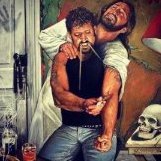


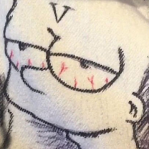
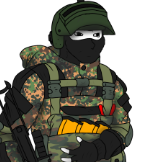




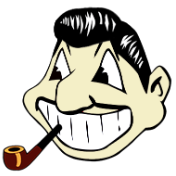


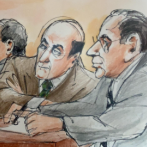

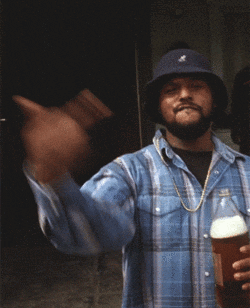


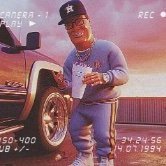

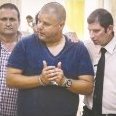












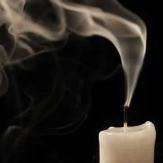

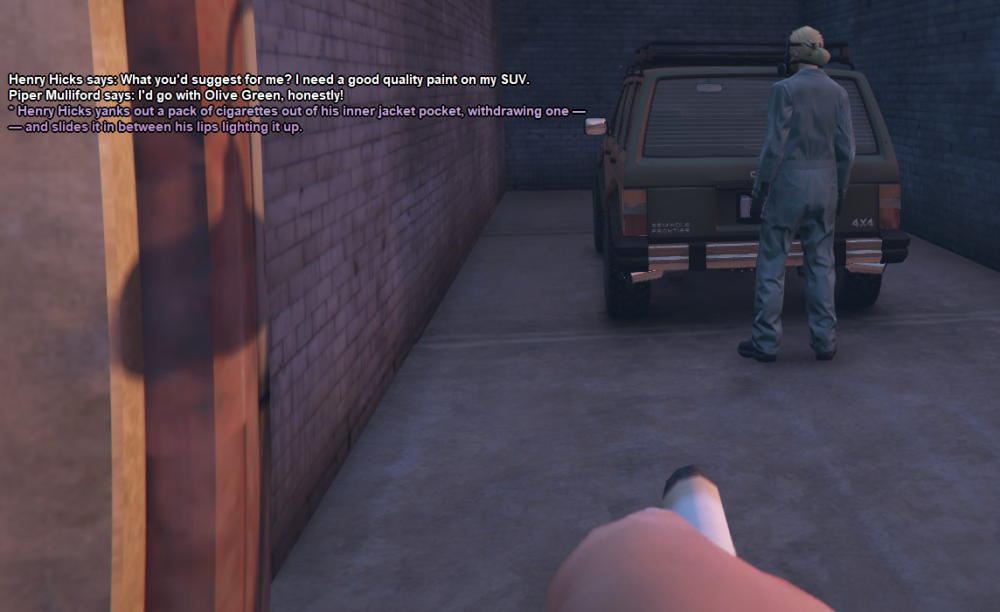
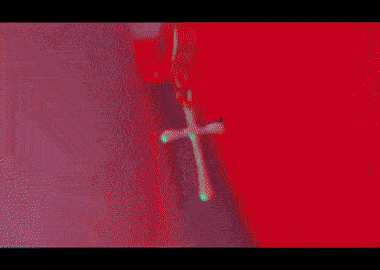

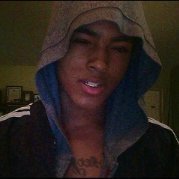


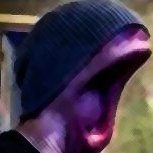


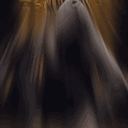

![St3fan[NL]](https://forum.gta.world/en/uploads/monthly_2022_02/Squad_Logo_Tekengebied_1_kopie_4.thumb.png.12d83fdc97b9933ebc038ee6841d7af8.png)
